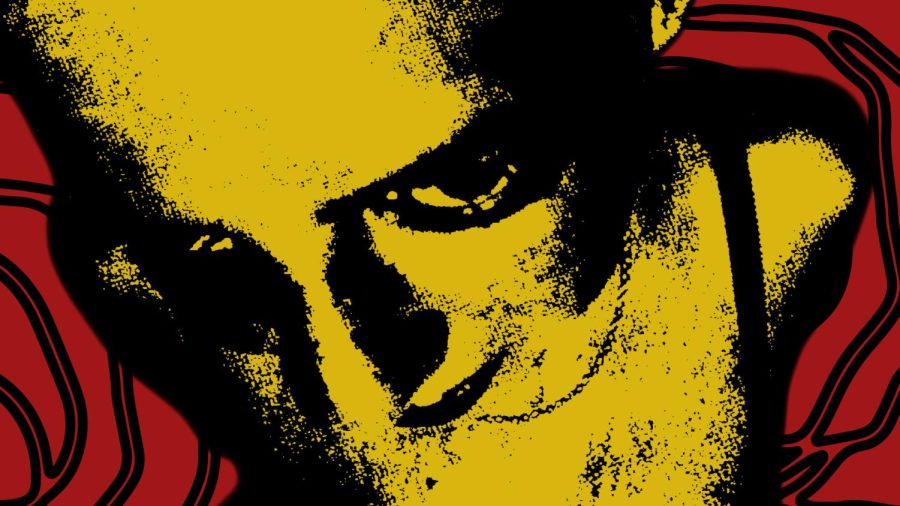Album review: “Around The Fur” Deftones, 1997
The 10/10 album every metal band wish they made
I ended the review by giving the album a perfect score.
January 12, 2023
Score: 10/10
A while ago, I reviewed Deftones’ “White Pony.” I remarked on how its ebb and flow through chaos and bliss provides a balanced listen. The album and most of Deftones’ material break the negative connotations the nu-metal era slapped on bands trying to bring a different sound to listeners. I ended the review by giving the album a perfect score.
However, since that review, I had an epiphany. While “White Pony” is still a perfect record, it stands next to another one the band released three years prior.
Deftones released “Around the Fur” in 1997 under Maverick. The band recorded the album in Studio Litho in Seattle, only taking about a month.
The record cover depicts a woman sitting alongside a hot tub, with a fisheye lens pointed vertically down from the top of her head. Photographer Rick Kosick took the photo at one of the band’s parties in Seattle. The band chose the image for the iconic cover of the record.
Deftones vocalist Chino Moreno said that he hated the cover because partying with other women was a bad look on the group.
“We were all married at the time, so how do we explain to our wives we’re in a hot tub with these chicks?” Moreno said to theprp.com
I beg to differ on the argument that the photo illustrates the album’s sound before listening to it. Both the sound of the album and the photo are dark, mysterious and unnerving. The cover and the music contain a hint of eroticism, a theme throughout the record.
CD and digital versions contain two hidden tracks after “MX.” For the sake of this review, I will be excluding them since the vinyl version does not include them. The band wanted “MX” to constitute the end of the record.
Guitarist Stephen Carpenter’s guitar playing on the album is different from most metal I have listened to. There is no emphasis on fast solos, Carpenter focuses on rhythm and chromatic chord progressions.
In songs like “My Summer (Shove It)” and “Lotion,” Carpenter hits these weird chords that sound like car crashes, adding to the dark and almost occult sound of the riffs.
Carpenter is not afraid to go simple on this album, with songs like “Headup” and “Be Quiet and Drive (Far Away)” almost entirely based on one single riff. Chi Cheng’s bass usually backs up the riffs note-by-note, adding more drive to Carpenter’s guitar playing.
Drummer Abe Cunningham uses a different snare on every single track. Despite slight differences in the timbre of certain tracks, most if not every snare sounds like they are tuned up extra high. The snares pop out in the mix, which helps add to the rhythm and drive of each track.
Moreno divides his vocal style into two sounds; the first side of the spectrum is destroying his vocal cords. “Lotion” sounds like Moreno is having a mental breakdown while Carpenter randomly strikes an out-of-tune guitar.
In “MX,” Moreno sounds like he is drowning during the main chorus. “Headup” sees Moreno team alongside ex-Sepultura vocalist Max Cavalera, which leads to a competition between the two to see who can destroy their vocal cords first.
Most screams in metal are often low-pitched, but Moreno’s screams are high-pitched and natural. It sounds like Moreno is screaming in complete terror.
On other tracks, Moreno goes in the complete opposite direction. His voice on tracks like “Mascara” and “Be Quiet and Drive (Far Away),” is almost ethereal. He sounds like an angel that somehow fell into the pits of hell.
Moreno delivers a drastic spectrum of vocal styles. This record proves that Moreno can switch from melodic singing to destroying his vocal cords in less than a quarter of a second.
By far the best track on this album is “Be Quiet and Drive (Far Away).” This one song has been my most listened-to song for over two years on my Spotify account. Carpenter only plays two chords for the entire song, yet it somehow is the most emotionally charged progression I have ever heard. You could give Beethoven a decade to write the most emotionally charged piece he can think of and he still would not come close to the emotion of this track.
Moreno sings about wanting to drive away from all of his problems instead of facing them, a problem I can personally relate to. Moreno does not care where he goes; he wants to get as far away as possible from his problems. The track fades out, sounding like Moreno is truly driving away from the listener. Somewhere down the highway, Moreno is still singing. His problems will follow him to wherever he ends up.
“Around the Fur” is practically the soundtrack to postcoital dysphoria, the record is laced with erotic themes yet most tracks sound devilish. No track on this record is skippable in the slightest, as every track seems to have something new to offer every time one song ends.
Most alternative metal bands nowadays try to copy the sound of “Around the Fur,” specifically trying to copy the sound of “Be Quiet and Drive (Far Away).” This album is even better than “White Pony,” as it adds a mixture of chaos and heaviness that Deftones move past on later records.



















D • Jan 17, 2023 at 7:23 am
For me, this album will always hold a special place – and I would listen back to back with White Pony to give me the full trip down memory lane!
Kristian Carlson • Jan 12, 2023 at 2:22 pm
Better than WP…
I don’t think so but glad you love it.
Best thing about deftones, snipers, they don’t miss!
Will • Jan 12, 2023 at 9:25 am
An amazing album indeed maaann!!!